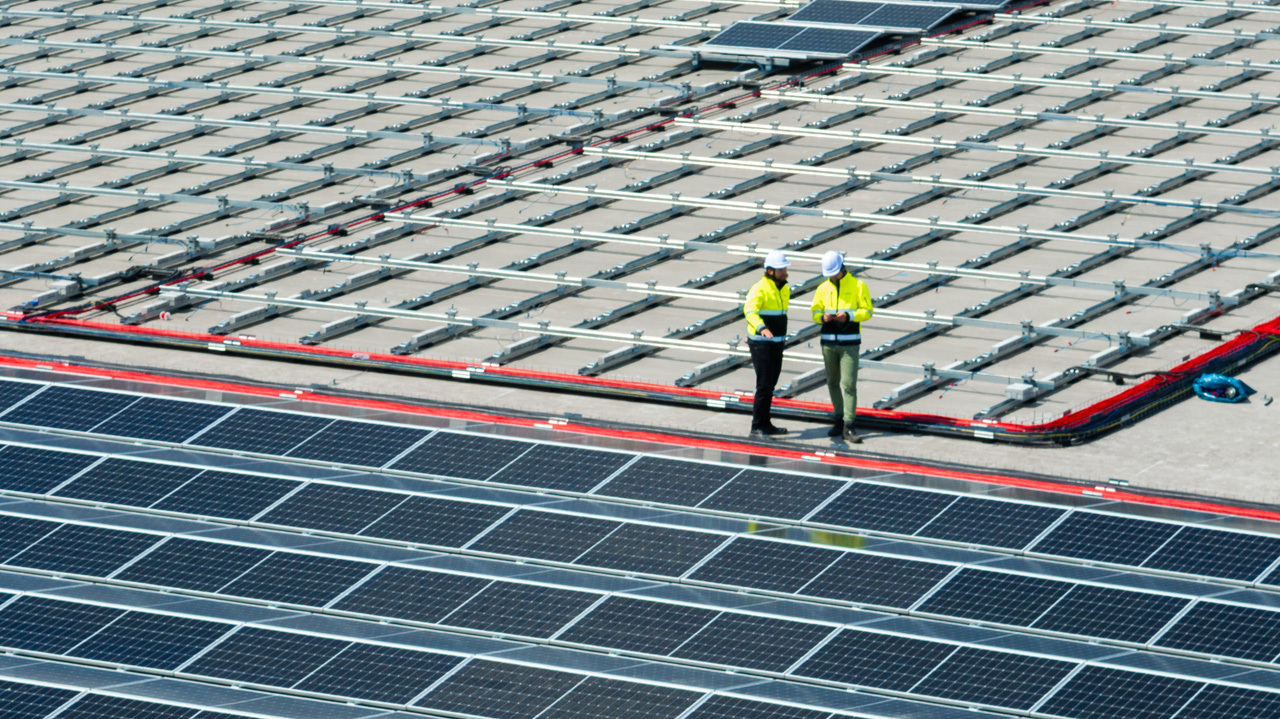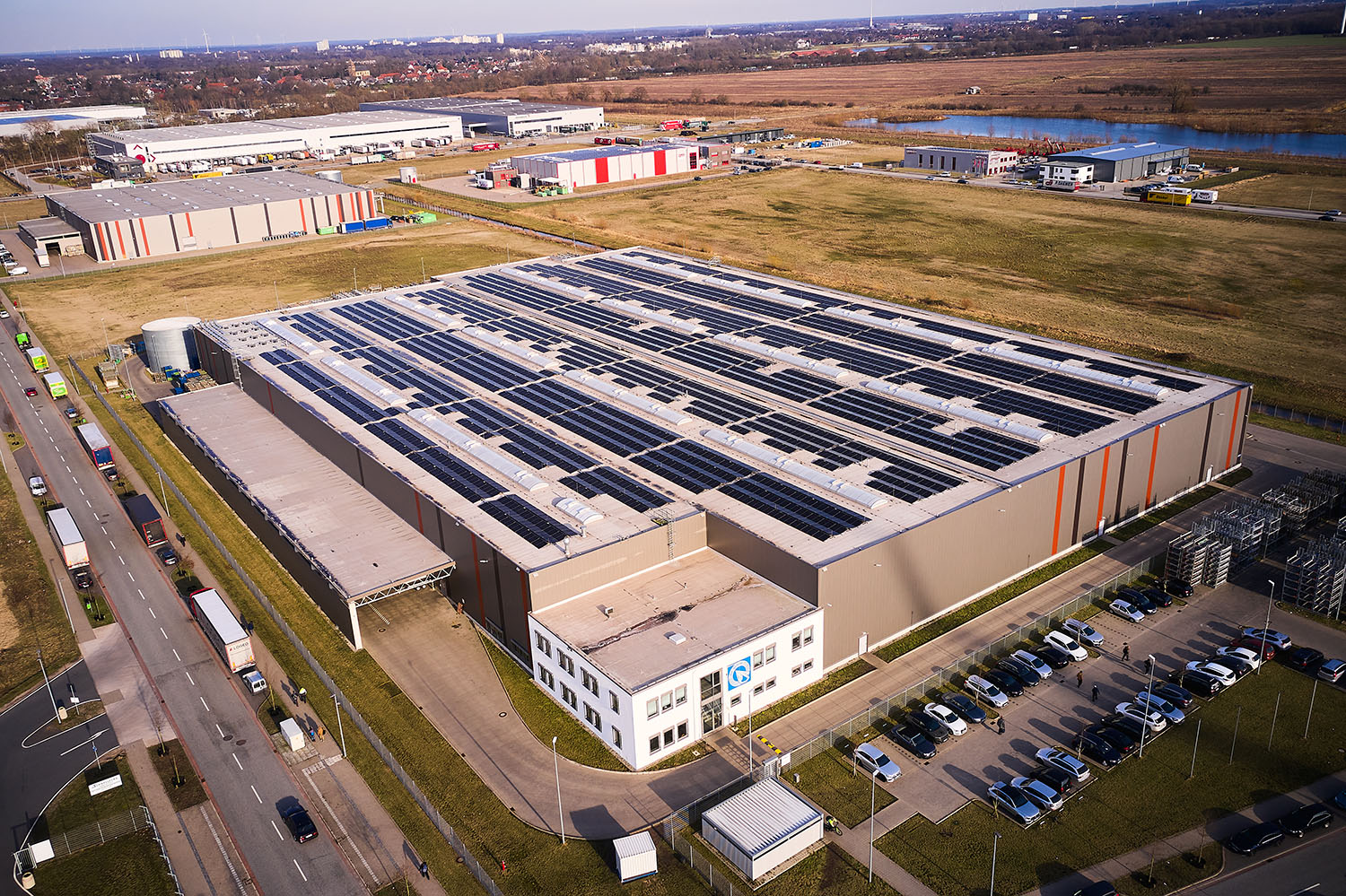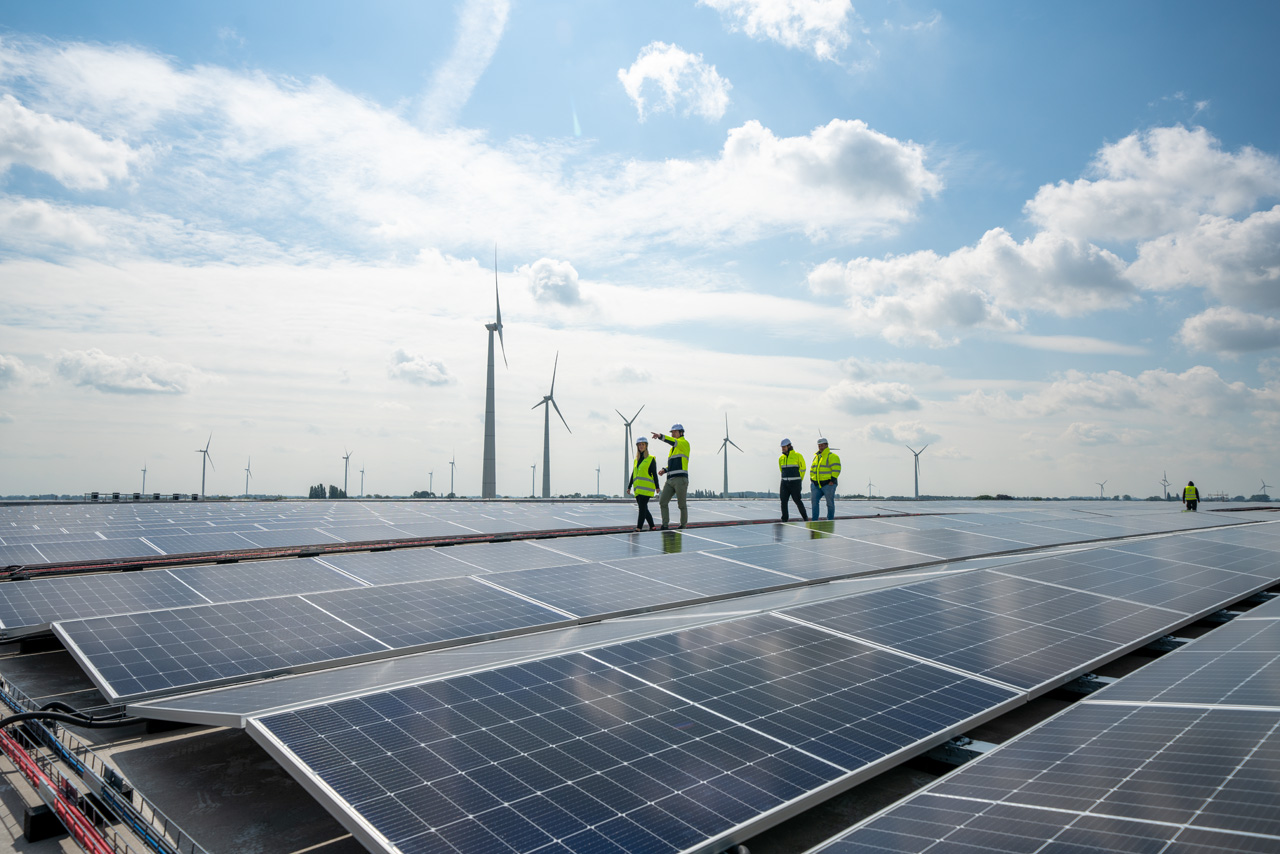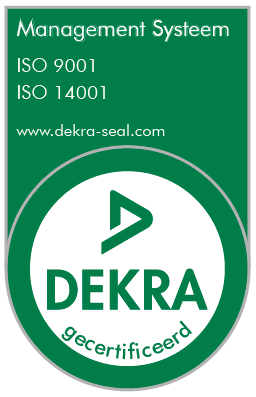We are making good progress. Across the country, small, large and very large roof areas are being fitted with solar panels. But there is still a lot to do. A number of companies have joined this market to exploit available rooftop areas for solar energy. Starting in 2012 Amsterdam-based Sunrock has grown into the largest developer of energy projects on roofs, land and water. Installation on Roofs presents a number of challenges and questions; how they work, how the carrying capacity, waterproofing and insurance are handled and what is the role played by roofing companies. After all, we are dealing with enormous surfaces that need to be prepared for solar panel installation.
Stephan Kleiwegt has been project manager for Sunrock for three years now, and in this capacity he is responsible for the construction of large-scale energy systems at distribution centres and other commercial properties. “We work a lot with real estate developers, such as DHG and Prologis. For example, we have just concluded an agreement with contractor Goldbeck Solar to install 46,000 solar panels for us at Distripark Maasvlakte on the ten new DHG distribution centres there. DHG is one of the clients that we have been working with from early on in the development process and as this is a new building, it is easier for us to work towards the optimal solution in terms of construction, roofing plan and energy system.”
Of course, it doesn’t always go smoothly. Kleiwegt: “The people working within the companies are always interested, but companies work in different ways, and there are obviously each business approaches it differently. Sometimes there is resistance from organisations because they cannot properly assess the risks and benefits. The first round usually goes well, but when you start talking about the technical realisation, the costs, liability and building and contents insurance, it often becomes more complicated. We try to play a role in this and regularly speak to insurers, for example, who look into what is acceptable or not. And when it comes to fire safety, the same few examples always come up which make them hesitant. In any case, it’s clear to us that we’re not going to start building on a roof with EPS insulation.”
Replacing top layer
“In practice, many existing buildings aren’t suitable because their construction is not strong enough or because the remaining life span of the roof is too short,” Kleiwegt notes. “Replacing a roof five years after it was started and thus having to take our system off and put it back on makes the operation unprofitable. We try to find out from the owner whether he is prepared to bring forward the roof replacement. It’s an extra investment, but it can work out to be financially rewarding.”
Additional carrying capacity
A new build is simpler. “Here, for the location and building height in question, we look at what the margins should be in the construction and what the best roof structure is,” Kleiwegt continues. “For example, we already ask for an extra margin on the load bearing capacity in the development phase. In the Maasvlakte case, this is a worthy investment, It costs the developer a modest amount, but it gives the roof added value and the building a better energy label.”
Engineering
Sunrock is also indirectly involved in the technology. Kleiwegt: “We are actually an intermediary with a strong emphasis on finance, but we also have in-house specialists who can, in all areas,, propose the right solutions to the contractors, structural engineers and PV installers in a technically focused way. This combination of financing and technology is what makes us successful: translating technical drawings into a business case. I myself am technically oriented. I know that we rarely install PV systems directly on a roof. Take Nippon Express, one of the largest existing roofs in the country. That roof was designed with enough load-bearing capacity to support an extra load and it is due to have 34,000 solar panels on it. Furthermore, the types of anchors used to install drop anchor plates are not suitable for PV systems because they should not be subjected to daily loads. I also have a project where we are going to install on 200 mm PIR. I would then like to see extra feet applied, otherwise you get dents, puddles of rainwater and moss formation.”
No greenery
Green roofs are not (yet) being considered by Sunrock. “That is mainly because of the weight. A wet green roof area quickly adds 80 kg and that means also adding extra costs. Our business case with SDE works with a guaranteed price for the electricity that is higher than the wholesale price, but a lot lower than the consumer price. This means you will not recover those extra costs.”
Pooling medium-sized projects
The really big roofs of logistic centres, among others, are very much on Sunrock’s radar. The next step is roof sizes between 1,000 m2 and 10,000 m2. Kleiwegt: “We have now installed 120 megawatt peak. That’s roughly 300,000 panels. We want to increase that by tenfold in five to seven years’ time. In order to achieve this, we are going to broaden our focus, which for now is on large roofs, to include other countries and medium-sized roofs. Think of DIY stores and production sites, but also hospitals. The number of inverters to be installed is important here; these are expensive components and you want to be able to use them in a smart and standardized way. We are also looking for smart solutions when it comes to installation. If you can save ten thousand euros on a system for this category of roofs by cleverly organising joint projects on industrial estates or by the coordinated use of cranes and other equipment, it becomes increasingly interesting to all parties involved. So here we are going to abandon the project-based approach and offer contracts per business park or on a more local or regional basis.”
Roofers
“Where we can also make gains is in collaboration with partners such as EPC advisers, installers and roofers. For example, roofers with a strong regional network can make a good estimate of where they think larger roofs will need to be renewed within the next two years; if you bring that renovation forward, you can include the PV in one go and make substantial savings, for example on the cost of cranes. This kind of thing makes projects on this scale possible: the clustering of buildings located close together and offering them one combined good product complete with charging stations is efficient. We are already well into our preparations and have a list of customers ready for the next SDE round.”



